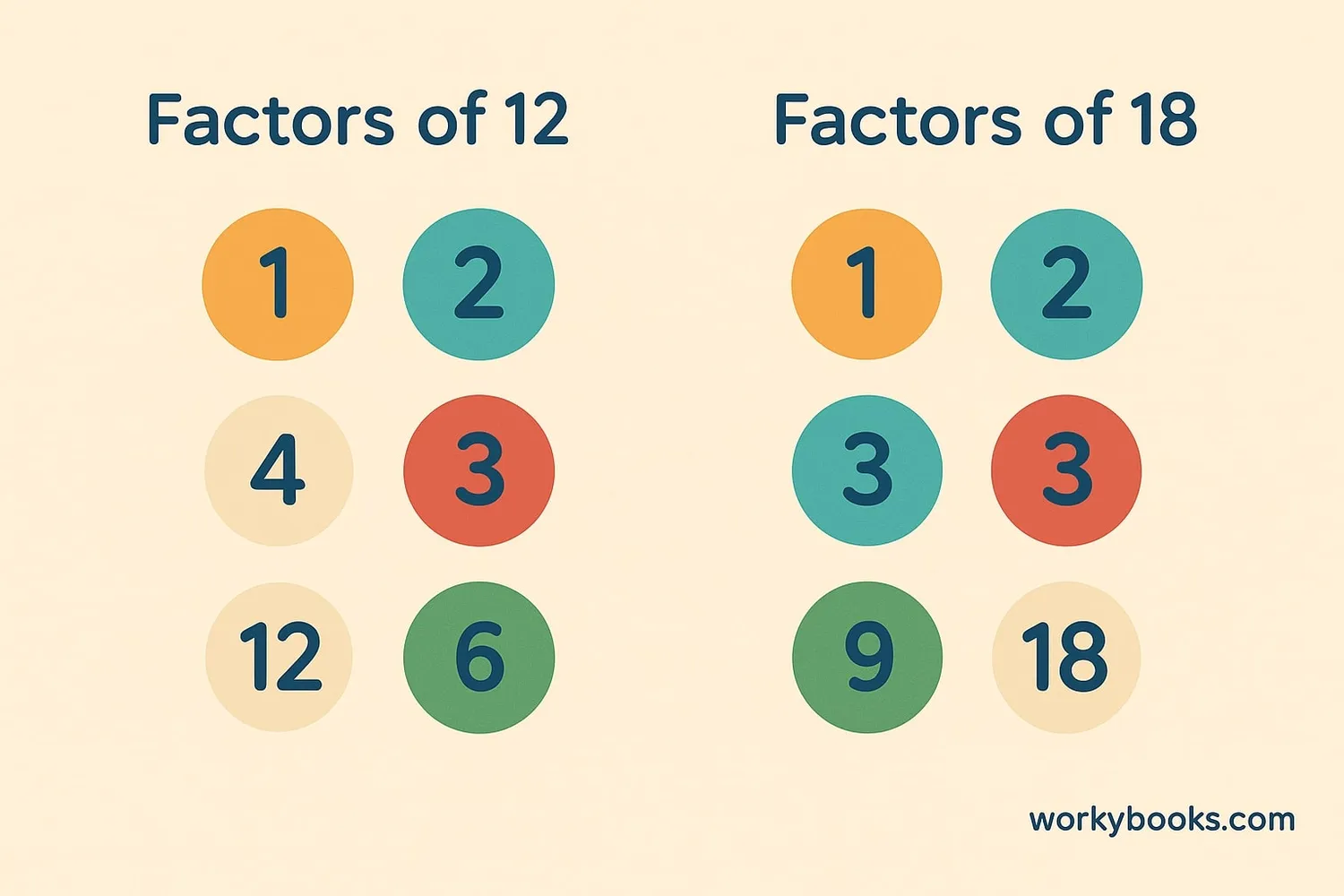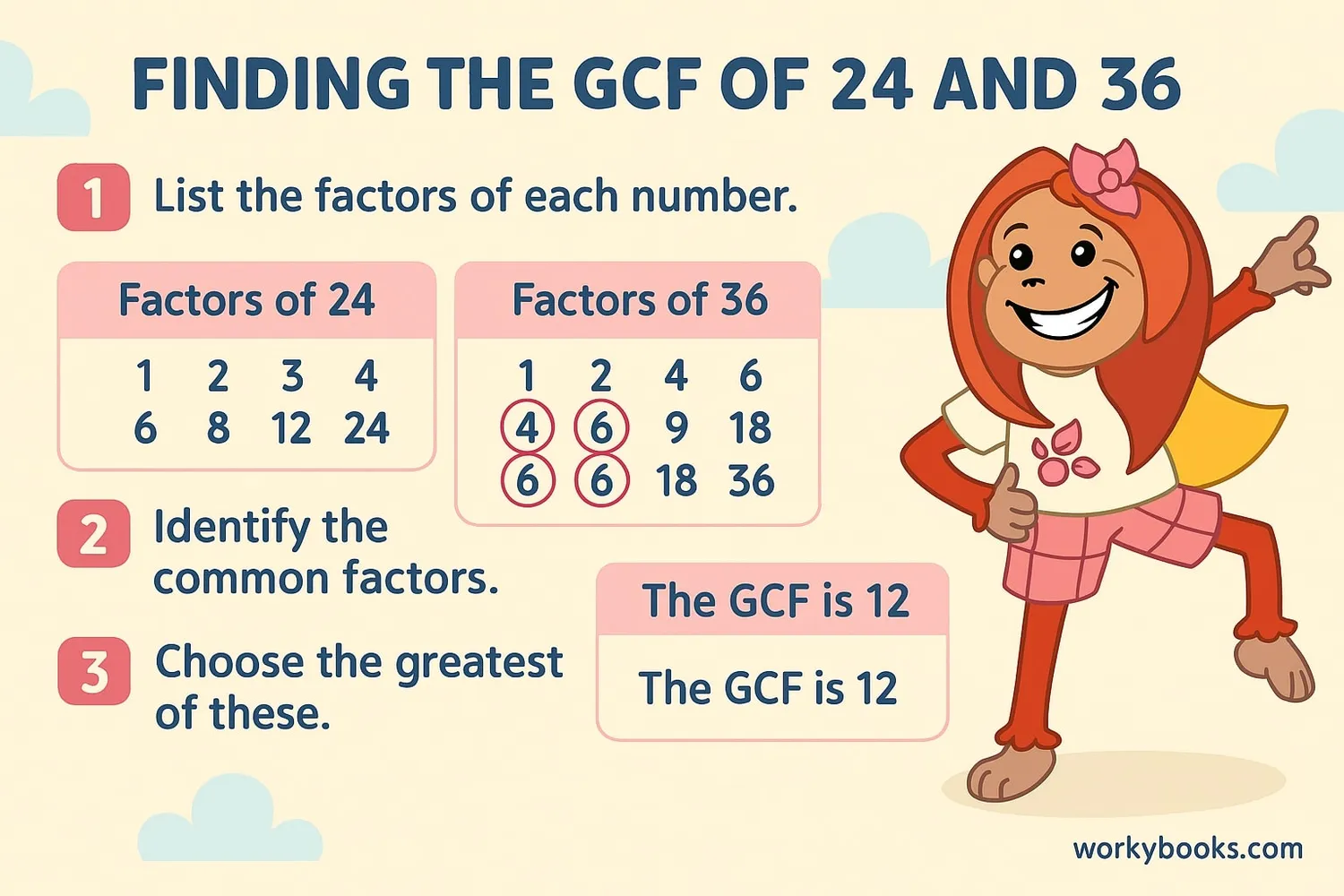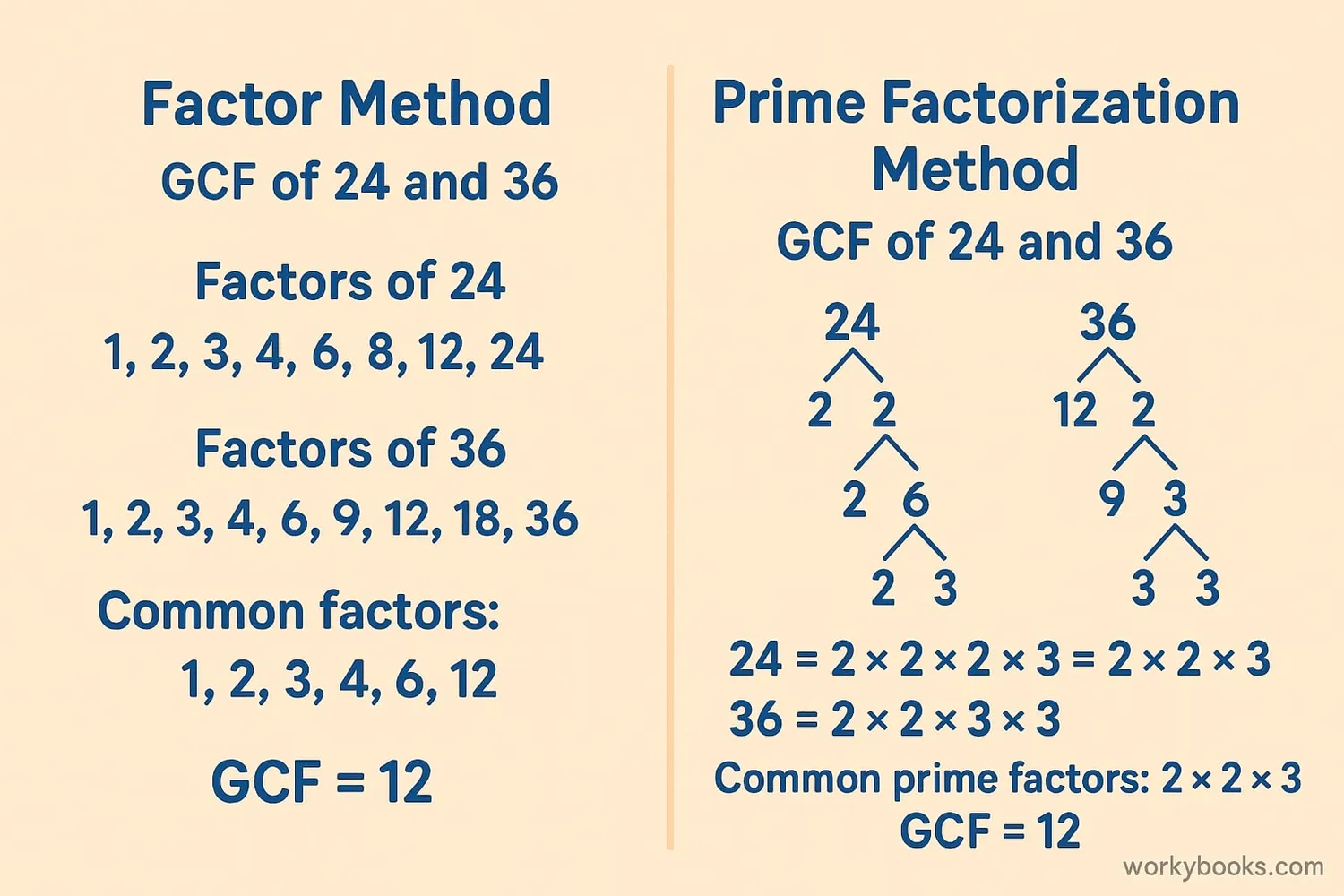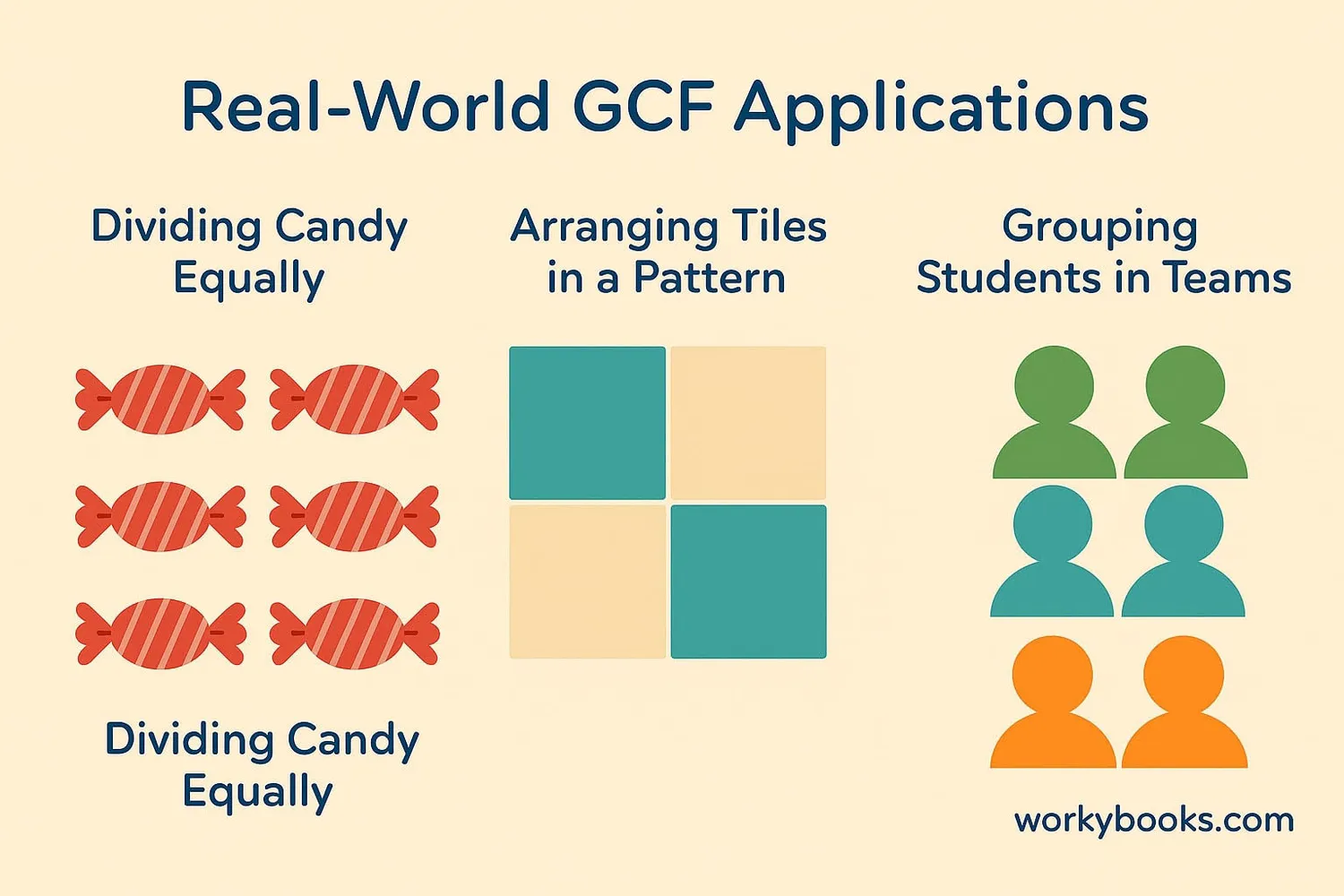Greatest Common Factor (GCF) - Definition, Examples, Quiz, FAQ, Trivia
Learn how to find the largest number that divides into two or more numbers
What is the Greatest Common Factor?

The Greatest Common Factor (GCF) is the largest number that divides exactly into two or more numbers. It's also called the Greatest Common Divisor (GCD) or Highest Common Factor (HCF).
Why is GCF important? We use it to simplify fractions, factor polynomials, and solve real-world problems involving sharing or grouping items equally.
Here's what you need to know:
- Factors are numbers we multiply together to get another number
- Common factors are factors that two or more numbers share
- The greatest common factor is the largest of these shared factors
Key Concept
The GCF is the largest number that divides evenly into all the numbers in your set.
How to Find the GCF

There are several methods to find the GCF. The simplest way is to list all factors of each number and find the largest one they have in common.
Let's find the GCF of 12 and 18:
Step 1: List the factors
Factors of 12: 1, 2, 3, 4, 6, 12
Factors of 18: 1, 2, 3, 6, 9, 18
Step 2: Identify common factors
Common factors: 1, 2, 3, 6
Step 3: Choose the greatest
Greatest common factor: 6
Remember
Every number has 1 as a factor, so the GCF is always at least 1. If the only common factor is 1, we say the numbers are "coprime".
Methods for Finding GCF

Factor Method
This is the method we just learned - listing all factors of each number and finding the largest common one. It works well for smaller numbers.
Prime Factorization Method
For larger numbers, we can use prime factors:
1. Find the prime factors of each number
2. Identify the common prime factors
3. Multiply these common factors together
Example: Find GCF of 24 and 36
Prime factors of 24: 2 × 2 × 2 × 3
Prime factors of 36: 2 × 2 × 3 × 3
Common prime factors: 2, 2, 3
GCF = 2 × 2 × 3 = 12
Division Method
Also called the Euclidean Algorithm:
1. Divide the larger number by the smaller number
2. If remainder is 0, the divisor is the GCF
3. If not, replace the larger number with the divisor, and the divisor with the remainder
4. Repeat until remainder is 0
Example: Find GCF of 48 and 18
48 ÷ 18 = 2 with remainder 12
18 ÷ 12 = 1 with remainder 6
12 ÷ 6 = 2 with remainder 0
GCF = 6
GCF Examples

Let's practice with some examples:
Example 1: Find the GCF of 15 and 25
Factors of 15: 1, 3, 5, 15
Factors of 25: 1, 5, 25
Common factors: 1, 5
GCF = 5
Example 2: Find the GCF of 36 and 48 using prime factors
36 = 2 × 2 × 3 × 3
48 = 2 × 2 × 2 × 2 × 3
Common prime factors: 2, 2, 3
GCF = 2 × 2 × 3 = 12
Example 3: Find the GCF of 14, 21, and 35
Factors of 14: 1, 2, 7, 14
Factors of 21: 1, 3, 7, 21
Factors of 35: 1, 5, 7, 35
Common factors: 1, 7
GCF = 7
Real-world Example: Maria has 12 apples and 18 oranges. She wants to make identical fruit baskets with no fruit left over. What is the greatest number of baskets she can make?
Solution: Find GCF of 12 and 18 = 6 baskets
Each basket will have 12÷6=2 apples and 18÷6=3 oranges
Practice Tip
Try finding the GCF of three numbers. Start by finding the GCF of the first two, then find the GCF of that result and the third number.
GCF Practice Quiz
Test your understanding with these GCF questions. Choose the correct answer for each question.
Frequently Asked Questions
Here are answers to common questions about Greatest Common Factor:
Math Trivia
Discover interesting facts about numbers and factors:
Ancient Math
The concept of GCF dates back to ancient Greek mathematics. Euclid described an algorithm for finding the greatest common divisor in his book "Elements" around 300 BCE.
Perfect Numbers
A perfect number equals the sum of its proper factors. The GCF of a perfect number and any other number is at least 1, but often more. The smallest perfect number is 6 (1+2+3=6).
In Nature
GCF appears in nature through patterns like the arrangement of leaves on stems (phyllotaxis) and the segmentation of insect bodies, often following the Fibonacci sequence.
Large Numbers
The largest known prime number has over 24 million digits. Finding the GCF of such large numbers requires special algorithms and computer programs.





